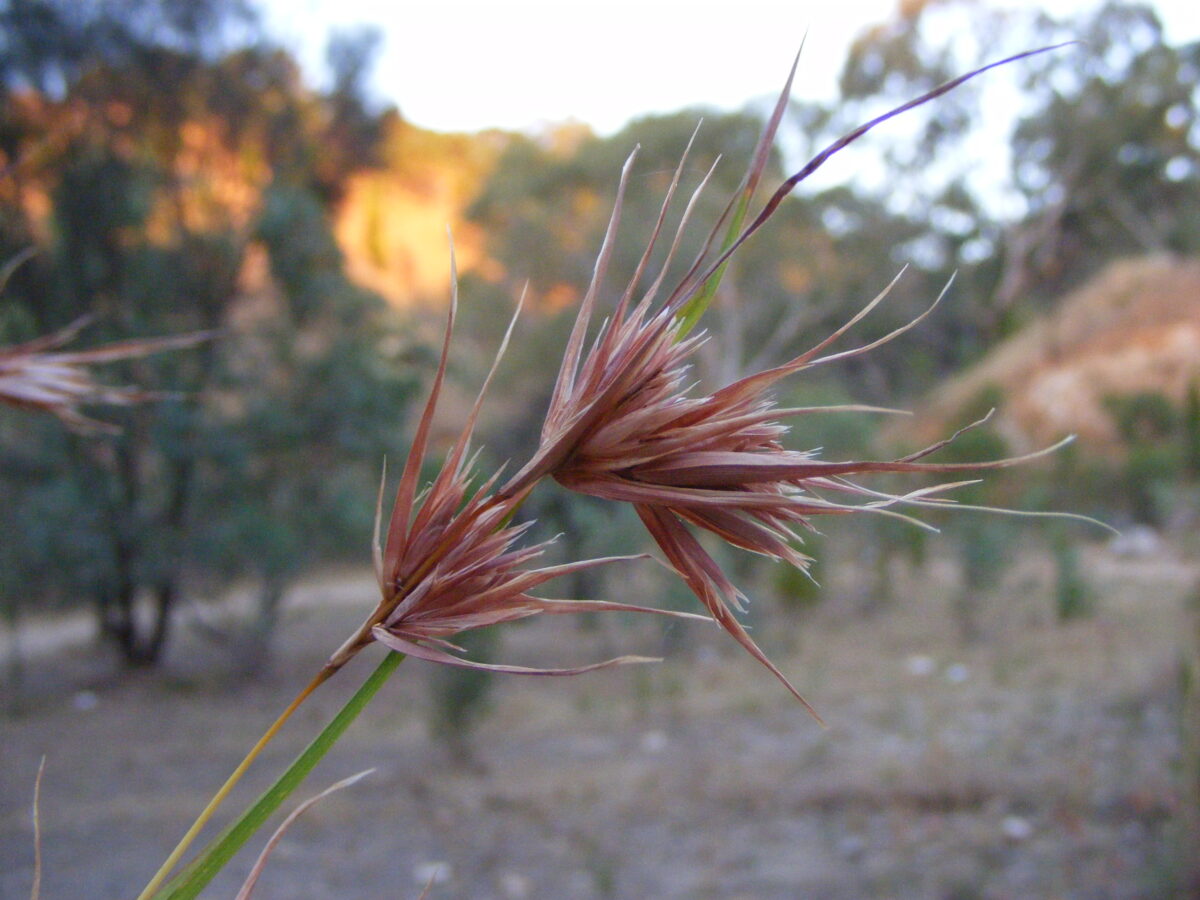Page snapshot: Quick facts about kangaroo grass (Themeda triandra), an ecologically important and widespread tropical grass.
Topics covered on this page: What is kangaroo grass?; Where is kangaroo grass found?; In which ecosystems does kangaroo grass grow?; What is the ecological importance of kangaroo grass?; How is kangaroo grass used?; Resources.
Credits: Funded by the National Science Foundation. Any opinions, findings, and conclusions or recommendations expressed in this material are those of the author(s) and do not necessarily reflect the views of the National Science Foundation. Page by Deme Burns (2023).
Updates: Page last updated June 27, 2023.
Image above: A close up of Themeda triandra. Also known as kangaroo grass or red grass. A common native grass of Adelaide, South Australia. Photographed at Anstey Hill recreation park December 30th, 2007. Photo by Peripitus (Wikimedia Commons, Creative Commons Attribution 3.0 Unported license. Photo resized and cropped.)
What is kangaroo grass?
Kangaroo grass (Themeda triandra), also known as red grass, is a short-lived, perennial, drought-resistant, C4 grass that is native to the dry tropics. Kangaroo grass grows up to 1.5 meters (about 5 feet) tall and is unbranched and deep-rooted. It often lives in very dry environments.
The common name "kangaroo grass" was coined by Ludwig Leichhardt in 1842 because he observed kangaroos eating it in Australia. Other common names include “red grass” in Africa, because of its reddish color, or “oat grass,” as it was used to make bread.
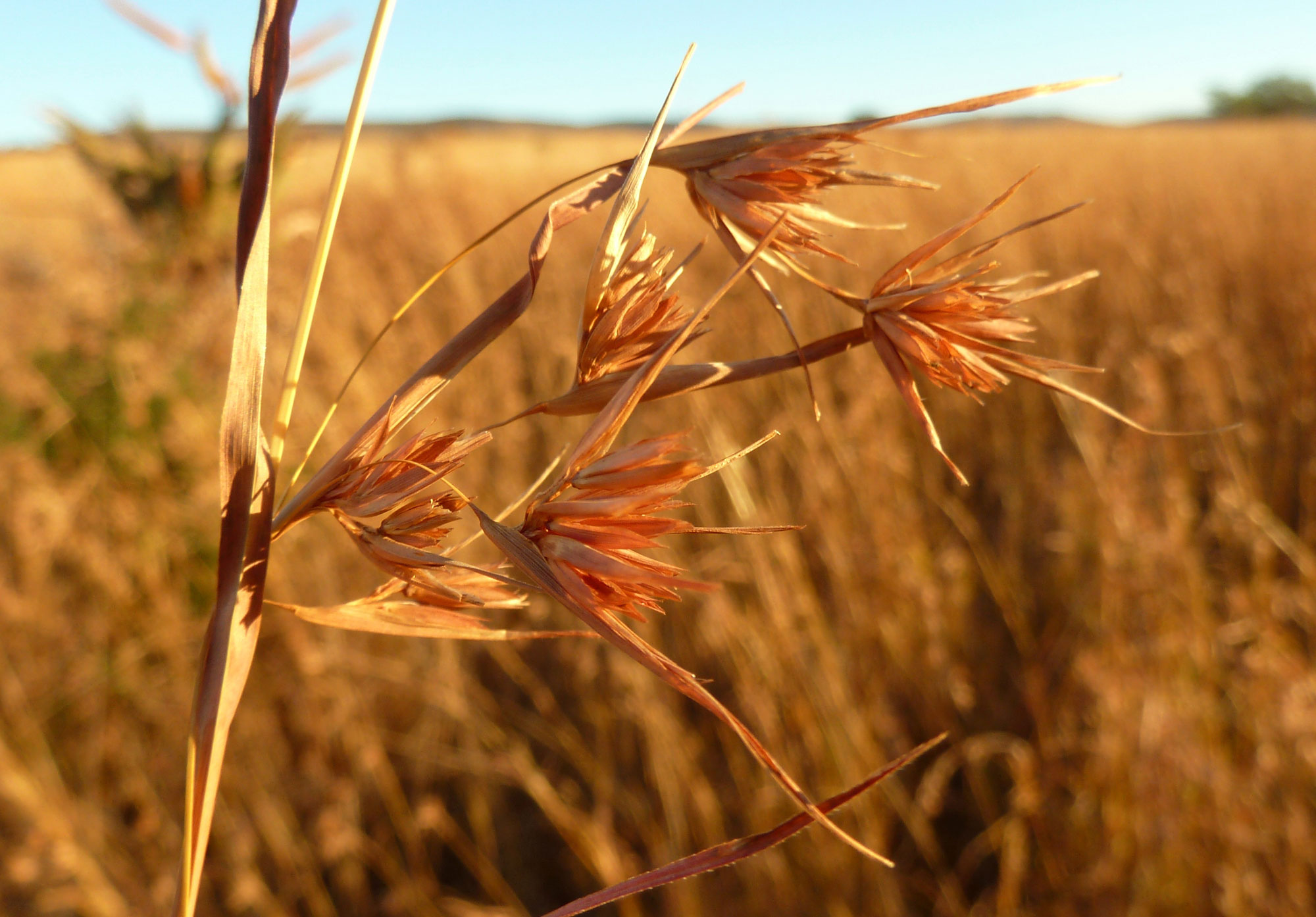
Kangaroo grass (Themeda triandra), Dingaanstat, South Africa. Photo by JMK (Wikimedia Commons, Creative Commons Attribution-Share Alike 3.0 Unported license, image cropped and resized).

Kangaroo grass or red grass (Themeda triandra), Kruger National Park, South Africa. Photo by Bernard DUPONT (Wikimedia Commons, Creative Commons Attribution-ShareAlike 2.0 Generic license, image resized).
Where is kangaroo grass found?
Kangaroo grass grows in tropical to warm temperate regions and is native to Australia, parts of Asia, Pacific islands, and Africa. Previously, the kangaroo grass in Australia was considered to be a different species than the kangaroo grass growing in Africa and Asia. Now, the Australian and African-Asian grasses are widely regarded as the same species. Recently, kangaroo grass has been introduced to New Zealand and France.
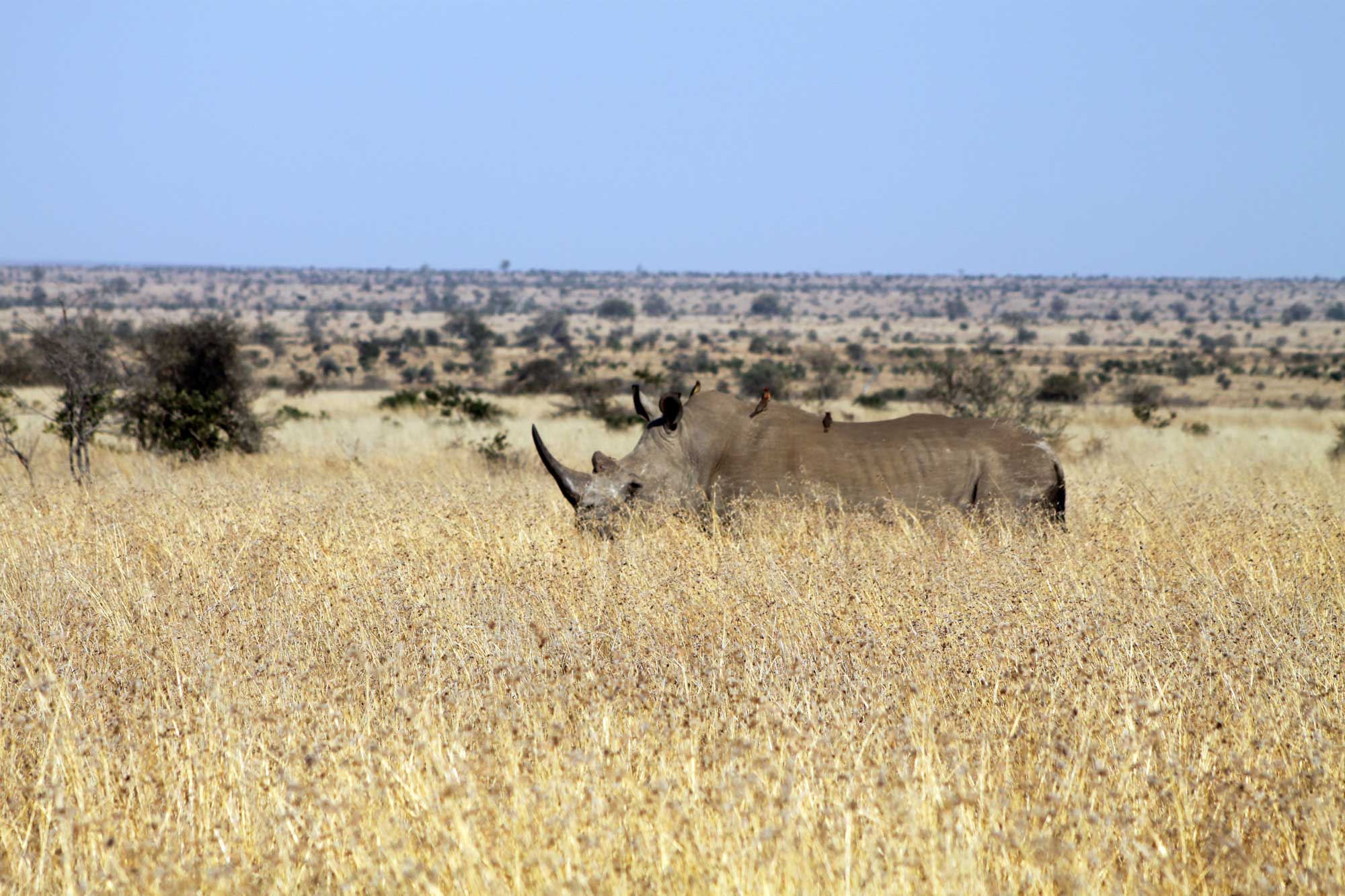
A rhino standing in kangaroo grass, Kruger National Park, South Africa, 2012. Photo by flowcomm (flickr, Creative Commons Attribution 2.0 Generic license, image resized).
In which ecosystems does kangaroo grass grow?
Kangaroo grass is found in a variety of climates, soils, and ecosystems, such as in grasslands, forests, savannas, and woodlands, as well as on mountains and rocky headlands. It is drought tolerant and grows best in hot environments. Kangaroo grass does not need a specific soil type to grow and can thrive in soils ranging from sandy soil to heavy clays.
Despite being drought tolerant, kangaroo grass prefers moist areas with lots of sunlight and is often found along roadsides. Moisture helps the grass resist fires. Periodic fires promote the dominance of kangaroo grass.
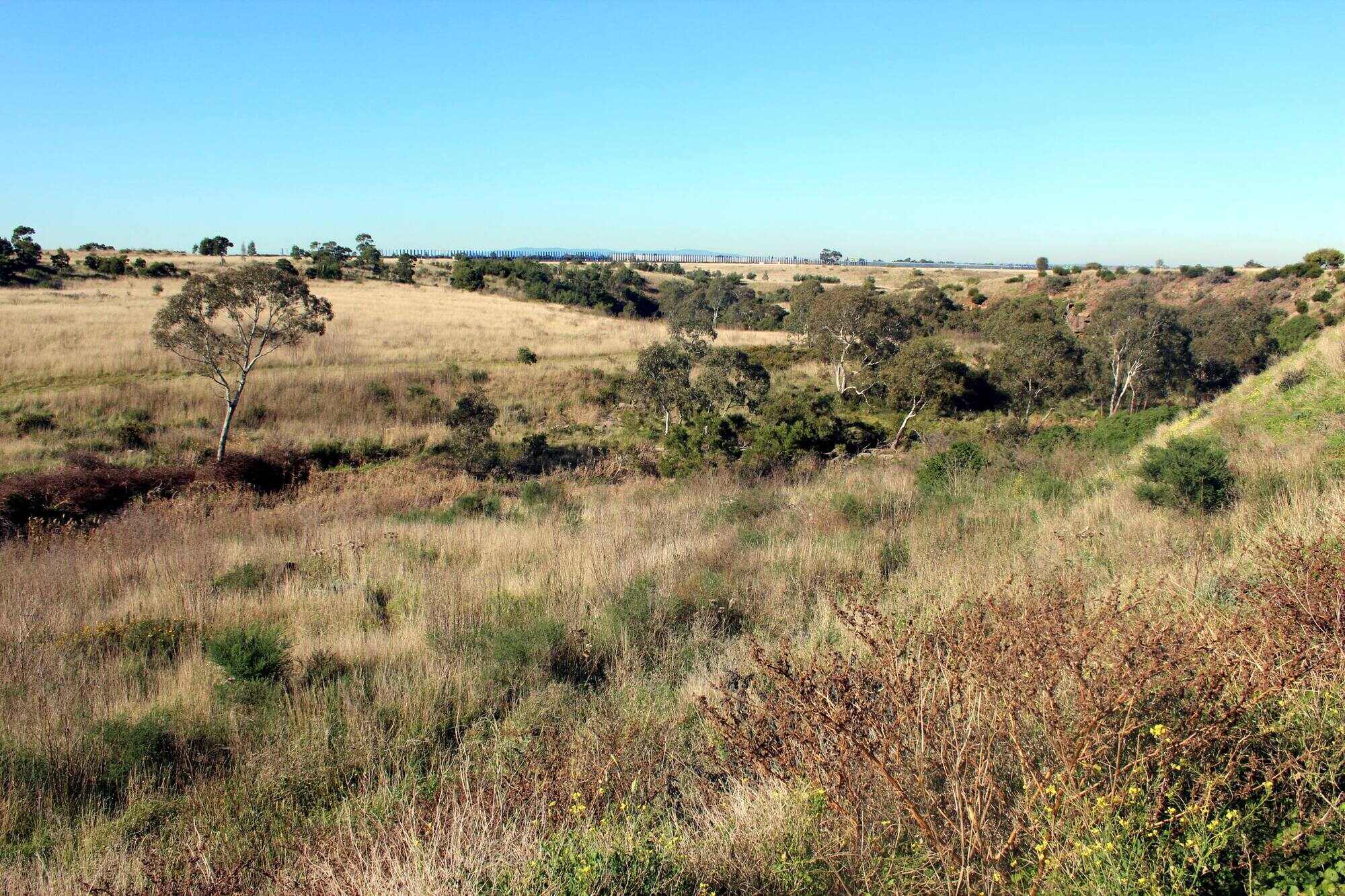
The Galada Tamboore grasslands, Australia. Photo by Takver (Wikimedia Commons, Creative Commons Attribution 2.0 Generic license).
What is the ecological importance of kangaroo grass?
In Asia, Africa, and Australia, kangaroo grass is important for fire management because it promotes low-intensity fires, which in turn promote healthy ecosystems by eliminating invasive species, promoting the growth of native vegetation, and decreasing the density of woody vegetation that can fuel more intense fires. Kangaroo grass also helps with the rejuvenation of degraded land.
Kangaroo grass is a food source for a variety of wildlife and livestock. In Australia, kangaroo grass is an important food source for cows and horses, as well as birds, kangaroos, wallabies, and other wildlife. Butterflies are also found in kangaroo grass because the grass provides shelter, a place to hide from predators, and a food source for caterpillars.

Burnt forest within Yengo National Park, Australia during the 2019 to 2020 summer bushfires. January 15th, 2020. Photo by Olderthangoogle (Wikimedia Commons, Creative Commons Attribution-Share Alike 4.0 International license, image cropped and resized).
How is kangaroo grass used?
Evidence suggests that as long as 30,000 years ago, Indigenous Australians used kangaroo grass as a staple grain to make flour, porridge, and damper, a type of soda bread. Kangaroo grass was also used by Indigenous Australians to build huts and make fishing nets. After European colonization, many farmers used kangaroo grass as a pasture crop for cattle grazing in dry areas because of its resistance to drought.
In Africa, kangaroo grass (there, more commonly called red oat grass) is mainly used as fodder but is also used to make pig bedding, paper, and basketry. In Uganda, the stems of red oat grass were traditionally used to make roofing for huts. This grass has been a reliable famine food in Africa. In West Africa, the roots of red oat grass are commonly used as a traditional medicine.
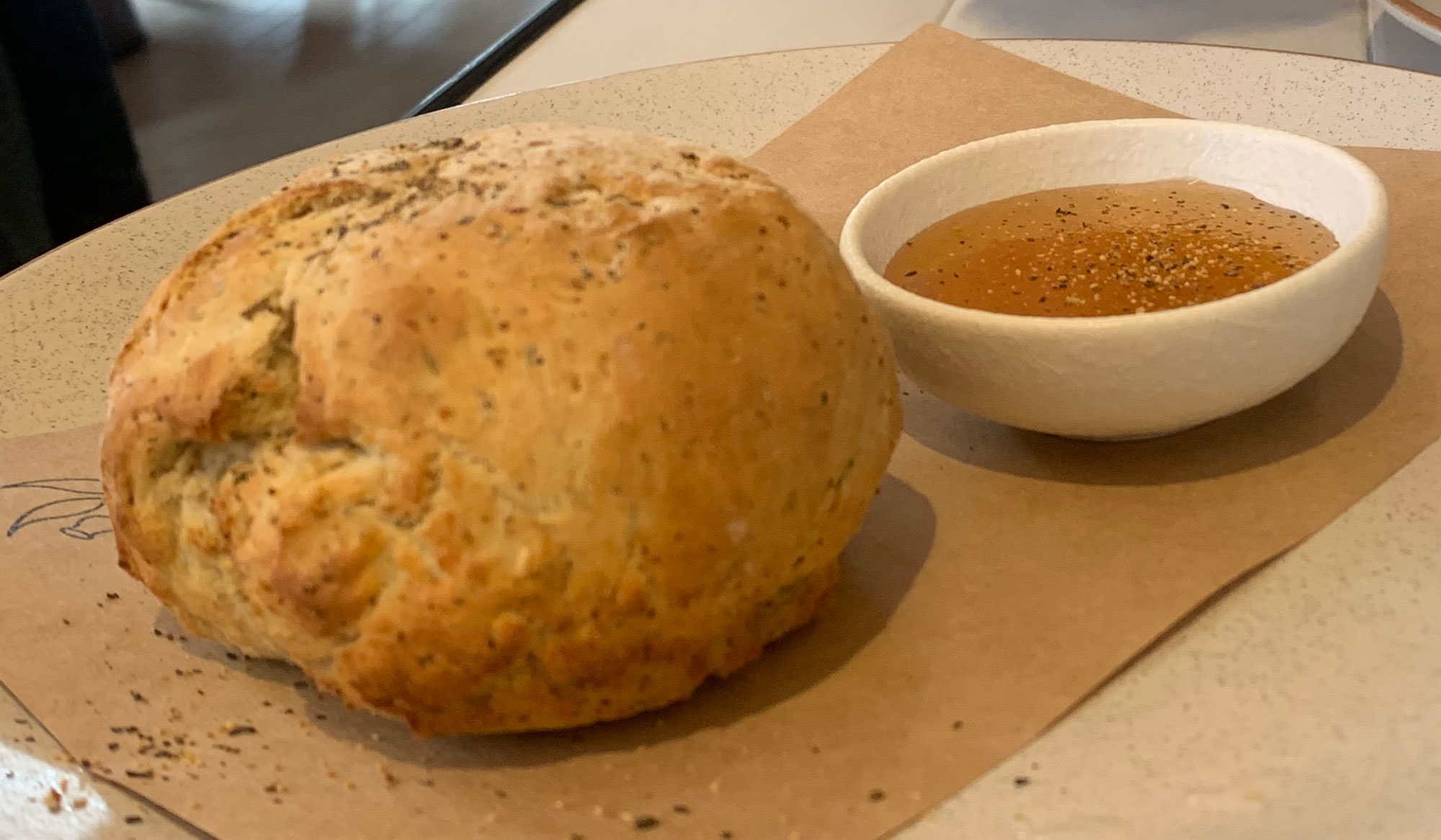
Damper bread, a type of Australian soda bread that was sometimes traditionally made using kangaroo grass grains. Photo by Finbar.concaig (Wikimedia Commons, Creative Commons Attribution-Share Alike 4.0 International license, image cropped and resized).
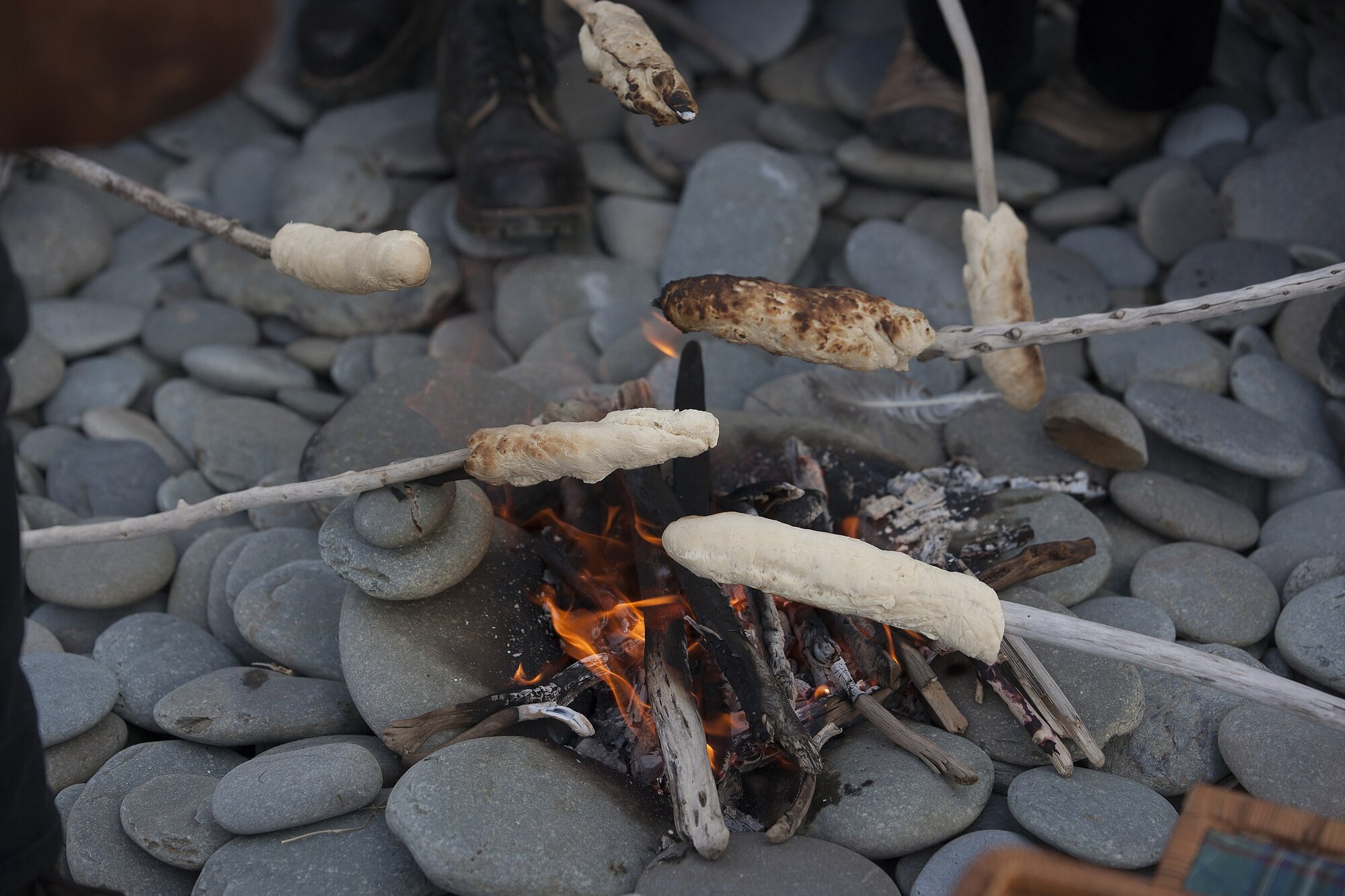
Damper bread, a type of bread that was traditionally sometimes made with kangaroo grass grains, being prepared over hot coals. Barrytown Beach, West Coast, New Zealand. September 24th, 2014. Photo by Stewart Nimmo (Wikimedia Commons, Creative Commons Attribution 4.0 International license. Photo cropped and resized.)
Resources
Websites
Feature Plant Friday - Kangaroo Wheat Grass. (R. Fieldhouse, Planting Seeds): https://www.ps.org.au/content/articles/2018/9/28/feature-plant-friday-kangaroo-wheat-grass
Thermeda triandra (Department of Primary Industries, New South Wales): https://www.dpi.nsw.gov.au/agriculture/pastures-and-rangelands/rangelands/publications-and-information/grassedup/species/kangaroo-grass
Articles & reports
Liles, J. 2004. Themeda triandra (Kangaroo Grass). Growing Native Plants, Center for Australian National Biodiversity Research and Australian National Herbarium: https://www.anbg.gov.au/gnp/interns-2004/themeda-triandra.html
Themedia triandra. Royal Botanic Gardens, KEW. National Botanical Research Institute of the Ministry of Agriculture. SEPASAL August 2007. http://the-eis.com/elibrary/sites/default/files/downloads/literature/High%20value%20plant%20%28HVPS%29%20Themeda%20triandra.pdf
Scientific Journals
Dell’Acqua, M., S. Gomarasca, A. Porro, and S. Bocchi. 2012. A tropical grass resource for pasture improvement and landscape management: Themeda triandra Forssk. Grass and Forage Science 68: 205-215. https://doi.org/10.1111/gfs.12019



